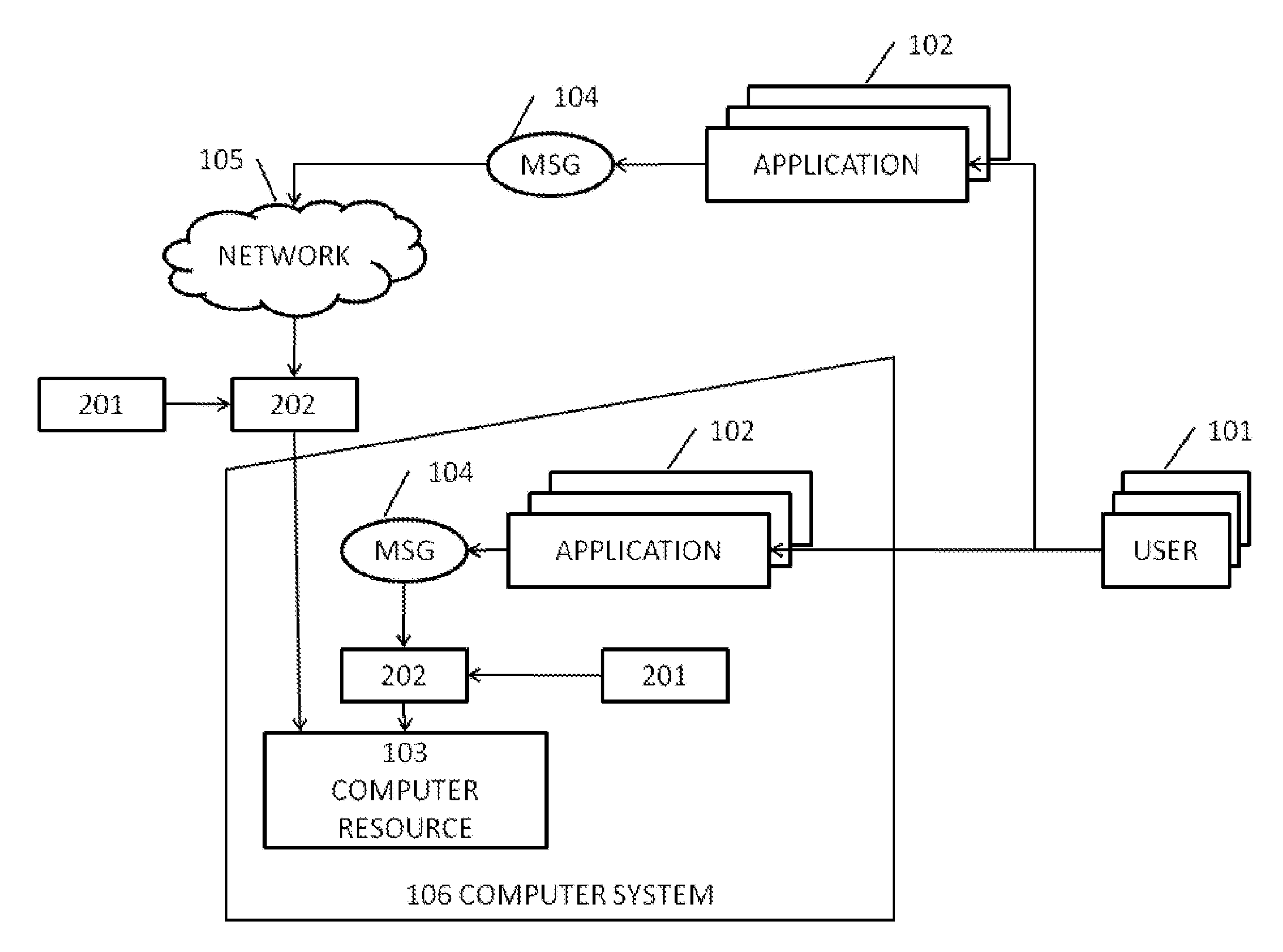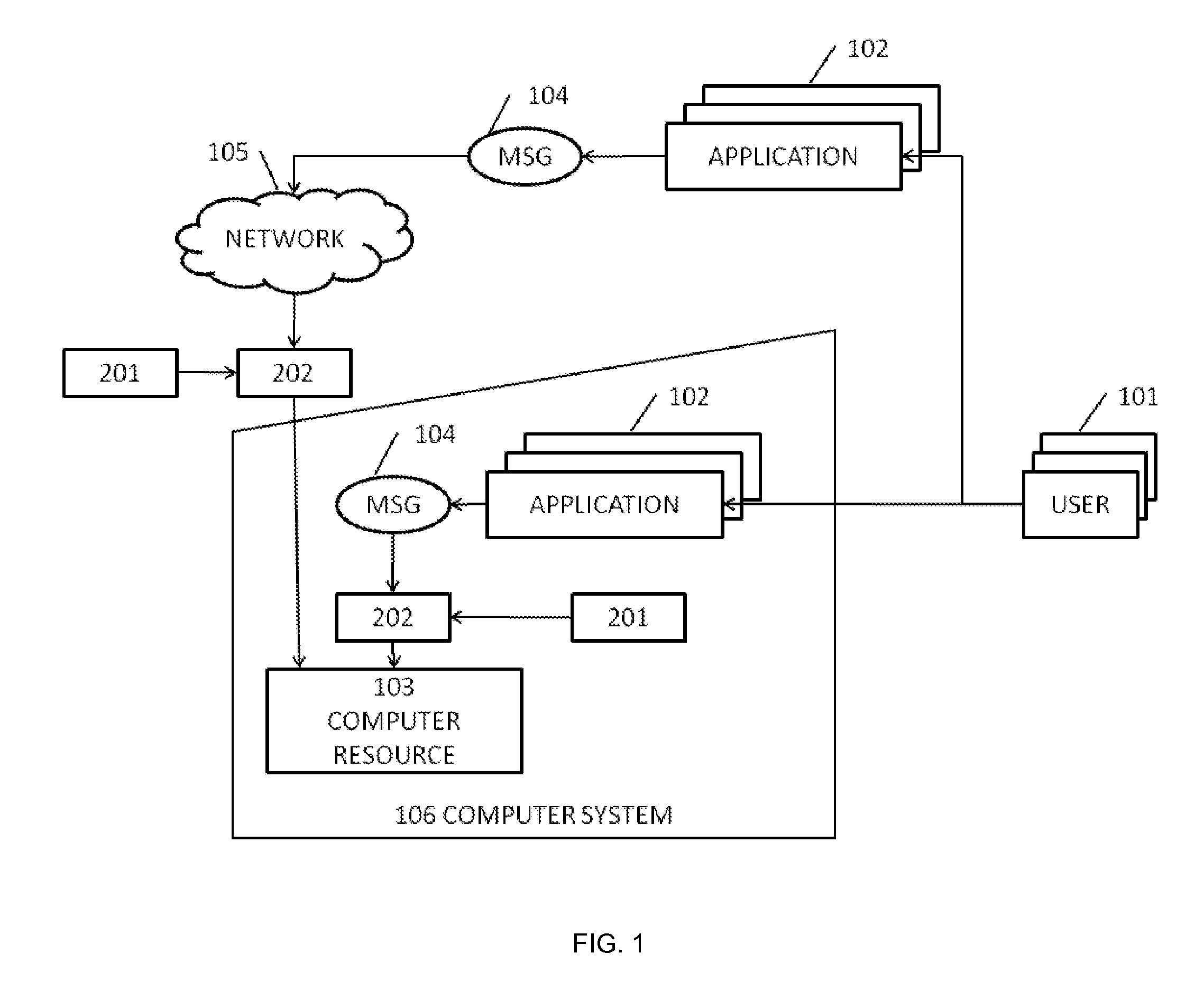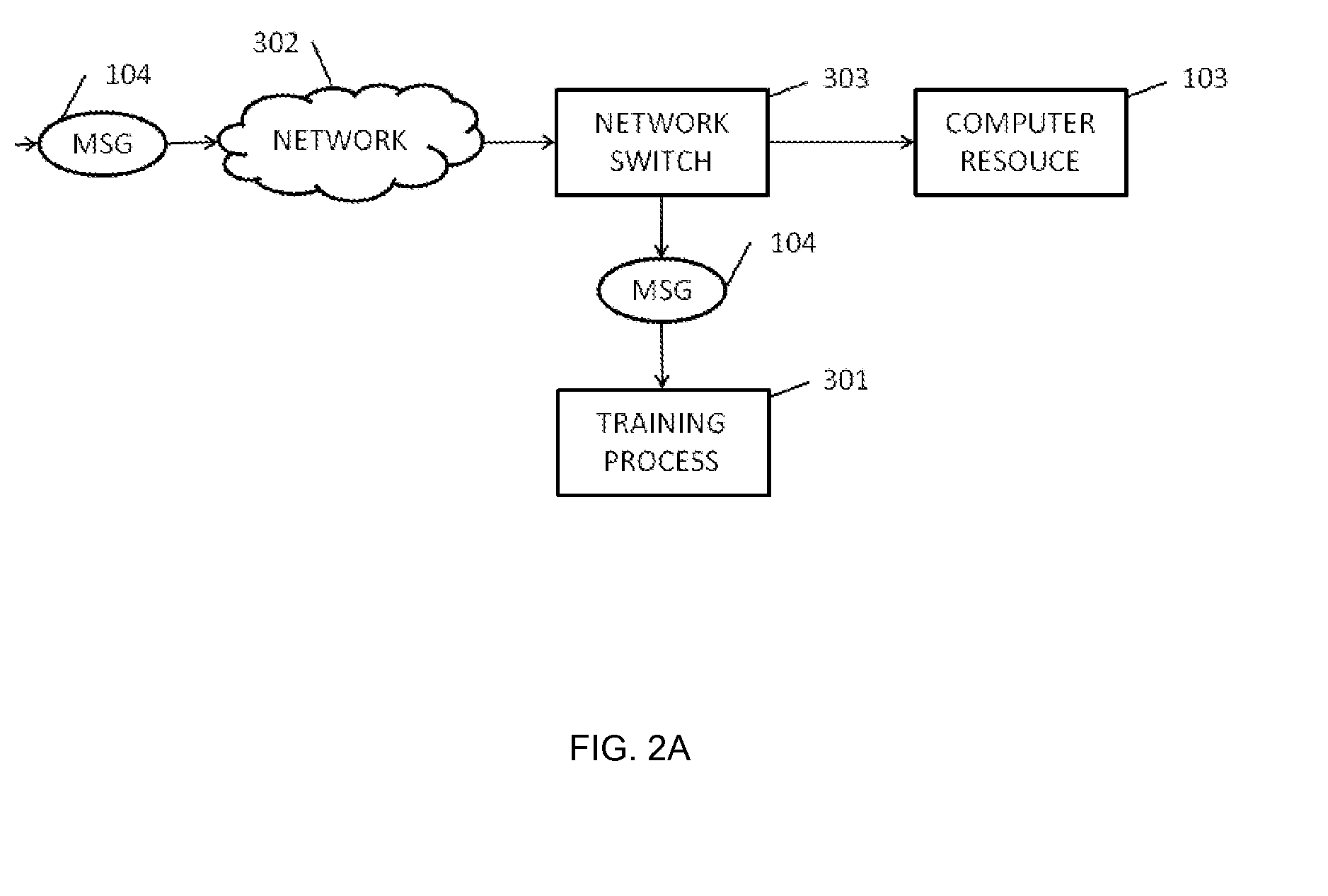Method, computer program and apparatus for controlling access to a computer resource and obtaining a baseline therefor
a computer resource and baseline technology, applied in the direction of program control, unauthorized memory use protection, instruments, etc., can solve the problems of poor control over the behaviour of the user or program, laborious and prone to errors, and the inability to cost-effectively generalize to control arbitrary computer programs or services. , to achieve the effect of efficient and precise determination, minimum overhead, and efficient operation
- Summary
- Abstract
- Description
- Claims
- Application Information
AI Technical Summary
Benefits of technology
Problems solved by technology
Method used
Image
Examples
Embodiment Construction
[0065]According to a first aspect of embodiments of the invention, there is provided a computer-implemented method of obtaining a baseline for use in a computer-implemented method of controlling access to a computer resource in which computer messages are sent to the computer resource in which the computer messages are compared with the baseline to determine whether or not each of the computer messages represents acceptable behaviour in the context of the computer resource, the baseline containing a set of computer messages which have been classified according to whether or not each of the computer messages of the set represents acceptable behaviour in the context of the computer resource, the method comprising:[0066]classifying a plurality of computer messages into clusters according to the behaviour of the computer messages in the context of the computer resource;[0067]determining, for a new message of the plurality of computer messages, whether the cluster to which the new comput...
PUM
 Login to View More
Login to View More Abstract
Description
Claims
Application Information
 Login to View More
Login to View More - R&D
- Intellectual Property
- Life Sciences
- Materials
- Tech Scout
- Unparalleled Data Quality
- Higher Quality Content
- 60% Fewer Hallucinations
Browse by: Latest US Patents, China's latest patents, Technical Efficacy Thesaurus, Application Domain, Technology Topic, Popular Technical Reports.
© 2025 PatSnap. All rights reserved.Legal|Privacy policy|Modern Slavery Act Transparency Statement|Sitemap|About US| Contact US: help@patsnap.com



